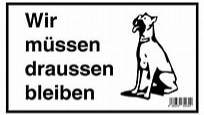Westland Mk. 41 SEA KING-EN
Westland Mk. 41 SEA KING
Shown here as a model in scale of 1 : 11 – built by Dieter Störig
Westland Helicopters, which had a long-standing licence agreement with Sikorsky Aircraft to allow it to build Sikorsky’s helicopters, extended the agreement to cover the Sikorsky SH-3 Sea King soon after the Sea King’s first flight in 1959. Westland proceeded to independently develop the Sea King, integrating a significant proportion of components from British suppliers; key changes include the use of a pair of Rolls-Royce Gnome turboshaft engines and the implementation of an automatic flight control system.On this matter, authors Jim Thorn and Gerald Frawley stated that: “Despite appearances, Westland’s Sea King [is a] very different aircraft from Sikorsky’s”.
Many of the differences between the Westland-built Sea King and the original helicopter were as a result of differing operational doctrine. While the U.S. Navy Sea Kings were intended to be under tactical control of the carrier from which they operated, the Royal Navy intended its helicopters to be much more autonomous, capable of operating alone, or coordinating with other aircraft or surface vessels. This resulted in a different crew arrangement, with operations being controlled by an observer rather than the pilot, as well as fitting a search radar.
The British Royal Navy selected the Sea King to meet a requirement for an anti-submarine warfare (ASW) helicopter to replace the Westland Wessex, placing an order with Westland for 60 SH-3D Sea Kings in June 1966. The prototype and three pre-production aircraft were built by Sikorsky at Stratford, Connecticut and shipped to the United Kingdom to act as trials and pattern aircraft. The first of the SH-3Ds was initially fitted with General Electric T58s and, after being shipped from the United States, was flown in October 1966 from the dockside at Avonmouth to Yeovil airfield. The other three were delivered from the docks, by road to Yeovil, for completion with British systems and Rolls-Royce Gnome engines.The first Westland-built helicopter, designated Sea King HAS1, flew on 7th May 1969 at Yeovil. The first two helicopters were used for trials and evaluation by Westland and the Aeroplane and Armament Experimental Establishment; subsequent production Sea Kings were delivered to the Royal Navy’s 700 Naval Air Squadron from August 1969 onwards.
By 1979, the Royal Navy had ordered 56 HAS1s and 21 HAS2s to meet the anti-submarine requirements, these were also configured for the secondary anti-ship role. The Westland Sea King was updated and adapted for numerous roles, subsequent variants include the HAS2, HAS5 and HAS6. Changes from initial production aircraft included an expansion of the cabin and upgraded engines.
The German Navy placed an order for 22 Sea King Mk.41s on 20th June 1969 as a replacement for the Grumman Albatross flying boat in the Search and Rescue Role. This was the first export sale for the Westland Sea King, and was the first dedicated Search and Rescue Sea King variant, with an enlarged cabin and more fuel. The German Sea Kings had similar radar and navigation equipment to the HAS.1, but was not fitted with sonar.The 22 Sea Kings were delivered between April 1973 and September 1974, equipping Marinefliegergeschwader 5 (MFG 5) (Naval Air Wing 5). An additional Sea King was delivered in April 1975 to replace one destroyed in a gale. The surviving Sea Kings were upgraded between 1986 and 1988, adding the capability to carry Sea Skua anti-ship missiles, which required the addition of a Ferranti Seaspray radar in a nose radome.
The 21 remaining Sea Kings are tasked to a variety of roles including SAR, transport, disaster relief, tactical land–sea transport, evacuation, surveillance, reconnaissance and naval support. The main base is Kiel Airport, although units are always stationed at Heligoland Airport and Rostock Airport, and sometimes at Borkum Airfield. The helicopters are scheduled to be replaced by the NH-90.
Text from Wikipedia, the free encyclopedia



